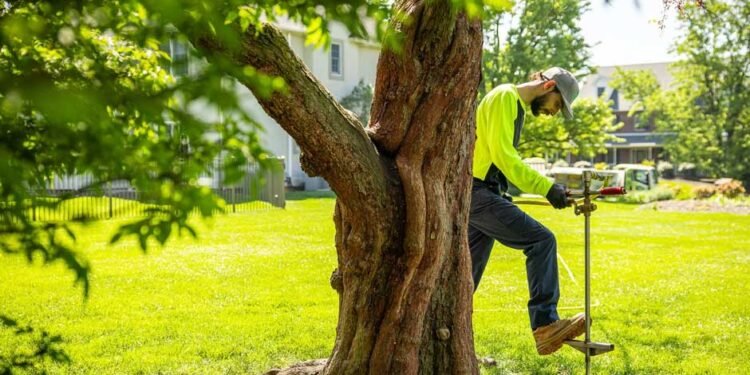Introduction to Tree Health
Trees are magnificent pillars of our ecosystems, offering shelter, beauty, and life-sustaining oxygen. A foundational understanding of tree care is essential to ensure they remain healthy and resilient. Trees in both urban and natural settings face unique challenges, making informed care practices vital. By incorporating proper fertilization and care techniques, we can significantly enhance the vitality and longevity of trees, benefiting the landscape and the environment.
Understanding Tree Fertilization
Tree fertilization is an essential aspect of maintaining tree health. It involves enriching the soil with nutrients to promote growth, resist disease, and improve stress tolerance. In urban areas where trees often face restricted root growth, soil compaction, and nutrient depletion, targeted fertilization routines can make a profound difference. Adopting practices that align with tree health Dallas principles ensures trees receive the right balance of nutrients to thrive.
When and How to Fertilize Trees
Fertilizing trees at the right time and using the proper methods is crucial for maximizing their benefits. Ideally, trees should be fertilized during active growth periods, such as early spring or late fall, when root activity is typically high. This timing allows trees to absorb nutrients efficiently, leading to robust growth and development. When applying fertilizer, it’s important to spread it evenly over the root zone, which often extends beyond the canopy. Granular fertilizers can be worked into the soil for gradual release, while liquid fertilizers offer rapid nutrient availability. Always ensure compliance with the manufacturer’s instructions to prevent over-fertilization, which can harm trees and the surrounding environment.
Essential Nutrients for Tree Growth
Trees require a variety of nutrients for optimal growth. The primary macronutrients are nitrogen, phosphorus, and potassium. Nitrogen is vital for producing chlorophyll, facilitating photosynthesis, and producing lush, green foliage. Phosphorus is essential for the plant’s energy transfer, which supports the growth of robust roots and flowers. Potassium contributes to water regulation, disease resistance, and overall health. In addition to these macronutrients, trees also need micronutrients such as iron, manganese, and zinc, which support various physiological functions. Monitoring nutrient deficiencies through plant tissue analysis and soil testing can help tailor fertilization practices to specific microenvironment needs.
Complementary Tree Care Practices
While fertilization is critical, it should be part of a broader approach to tree care, including mulching and pruning. Mulching has numerous benefits: it conserves soil moisture, regulates soil temperature, reduces competition with weeds, and adds organic matter as it decomposes. A proper mulch layer, about 2 to 4 inches thick, should be spread out evenly, avoiding piling around the trunk to prevent rot and pest issues. Another crucial procedure for getting rid of unhealthy or dead branches and promoting healthy new development is pruning. In order to improve air circulation and light penetration within the tree canopy and lower the danger of fungal diseases and other health issues, it should be done systematically.
Seasonal Tree Care Tips
Care practices for trees should adjust with the changing seasons to accommodate their evolving needs, which is why services like tree trimming shoalhaven are essential year-round. In spring, focus on revitalizing trees that may have been stressed during winter. Inspect for any damage and treat accordingly. To maintain adequate hydration, summer months require vigilant water management, especially during dry spells. Fall is an excellent time for fertilization, as cooler temperatures and increased rainfall aid in nutrient absorption. Protecting trees from harsh conditions with wraps or additional mulch can mitigate potential cold damage in winter. By using focused care techniques, trees can maximize their health during each season’s special opportunities and difficulties.
Common Tree Care Myths
Various myths about tree care can lead to ineffective or harmful practices. One widespread myth is that trees should be fertilized on a fixed schedule without regard to actual nutrient needs, which could result in nutrient imbalances. Another misconception is that tree roots grow deeply into the soil when, in fact, most roots are within the top 12 inches, where they can access oxygen, water, and nutrients. Dispelling these myths through education and understanding can lead to more informed decisions and healthier trees.
Conclusion
Cultivating healthy trees requires knowledge, observation, and care, but it is a gratifying endeavor. By focusing on essential practices such as proper fertilization, mulching, and pruning and being responsive to seasonal changes, anyone can contribute to the health and longevity of trees. Our dedication to preserving these vital elements of our surroundings will benefit future generations in terms of aesthetics, biodiversity, and ecosystem function.












